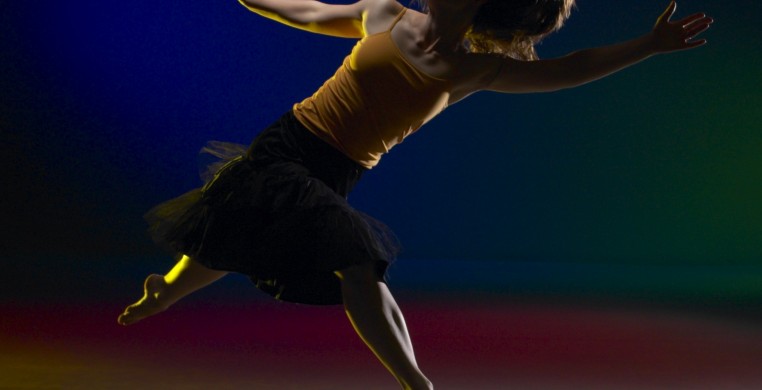By Laura Molzahn
"I prefer the term 'hybrid' over 'fusion' dance," says Emma Draves. "For me, 'hybrid' better honors the contributions in their original forms. And with the tradition of Indian dance, the lineages are clear, the history is important -- I don't want to swallow any of that up!"
In her yearlong position as a Links Hall artistic associate, Draves has curated the three-weekend "Braiding Rivers Festival," which investigates new takes on classical Indian dance. The third and final weekend, beginning May 31, features a program of works by Draves, Minneapolis-based Ananya Dance Theatre, and Krithika Rajagopalan, associate artistic director of Natya Dance Theatre.
Draves herself has trained in contemporary, modern, and ballet -- but was exposed to classical Indian dance early in life. Though she grew up in the middle of Indiana, in Marion (pop. 30,000), her best friends were Indian and Sri Lankan. Draves says that her parents "encouraged us to see outside our own experience," and her friends' homes were filled with South Asian art and conversation. Though Marion didn't have an Indian dance school, "the diasporic community wanted to keep its traditions alive," says Draves. "So once a year, or more, there were small community-oriented cultural festivals in town, and I got to see the folk dances."
Eight years ago, Draves met Hema Rajagopalan of Natya Dance Theater and started dancing bharatanatyam. "For this festival," she says, "I was curious about people who'd trained significantly in both [Western and Indian] forms, who had those experiences in their own bodies." Exploring this particular kind of multicultural identity is common in California, New York, and London, she says -- less so in Chicago.
One of the best things about the festival's first two weekends, Draves says, was the opportunity to connect with others in the field. At the initial show, she met the folks at Chicago's Silk Road Rising for the first time; the Post Natyam Collective, based in LA, taught Bollywood classes at the Dance Center of Columbia College. The second, "yogic" weekend, featuring work by both Chicago's Silvita Diaz Brown and PosterchildArt, put the audience in a mellow, happy mood, says Draves.
On the festival's final weekend, Saturday night only, Milwaukee-based Danceworks, Inc. will perform The Violet Hour, a piece commissioned from Draves. "My idea," she says, "was to really hybridize the pure dance aspects of bharatanatyam and the outward intention of modern dance, its momentum and fluidity. It's my experience of a hybrid vocabulary, but presented as a cohesive dance piece and not 'othered.'"
When The Violet Hour debuted in Milwaukee last February, one reviewer "exoticized the dance, talking about 'Bollywood verve' and the beauty of the women and their bodies," Draves says. "People just don't have the words to talk about what they're seeing. That's another, underlying reason for the festival: these artists don't fit into neat categories, classical or contemporary, and that makes grants harder to come by."
On Friday and Sunday, Draves substitutes her Chimera for The Violet Hour; inspired by that hybrid creature, this solo will be accompanied by percussionist Brent Roman of Mucca Pazza. Every program includes Krithika Rajagopalan (daughter of Hema, Natya's artistic director) in two of her solo works: Sita Kavya, about women being asked to verify their integrity, and the new 108, exploring "the architecture of bharatanatyam."
Also on all three nights, Ananya Chatterjea presents her trio, Chhaya, from the shadows. Describing it as "an exploration of women's desires, fears, and resistance" rooted in a deconstruction of classical Indian tradition, she says it typifies her work. The music blends different cultural influences, and the piece has what she calls "an unfolding narrative that's not linear -- you're invited to make up your own story."
Acknowledging that classical Indian dance is capable of "tremendous clarity," Chatterjea adds that "we want to tell different kinds of stories. that are about our lives now. And I want people to tell us what they see." She's looking forward to face-to-face conversations here (there's a talkback after Friday's show, and post-performance receptions all three nights). But she's also had productive exchanges through Facebook and Twitter.
"I love that Emma is working with this vibrant movement," says Chatterjea. "We need to have contemporary Indian dance that's not Bollywood."


